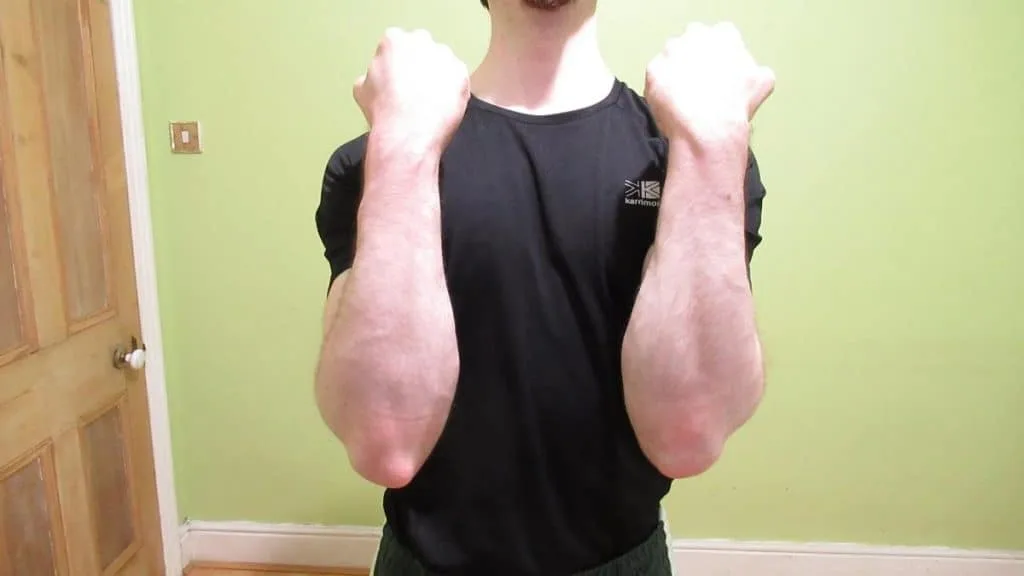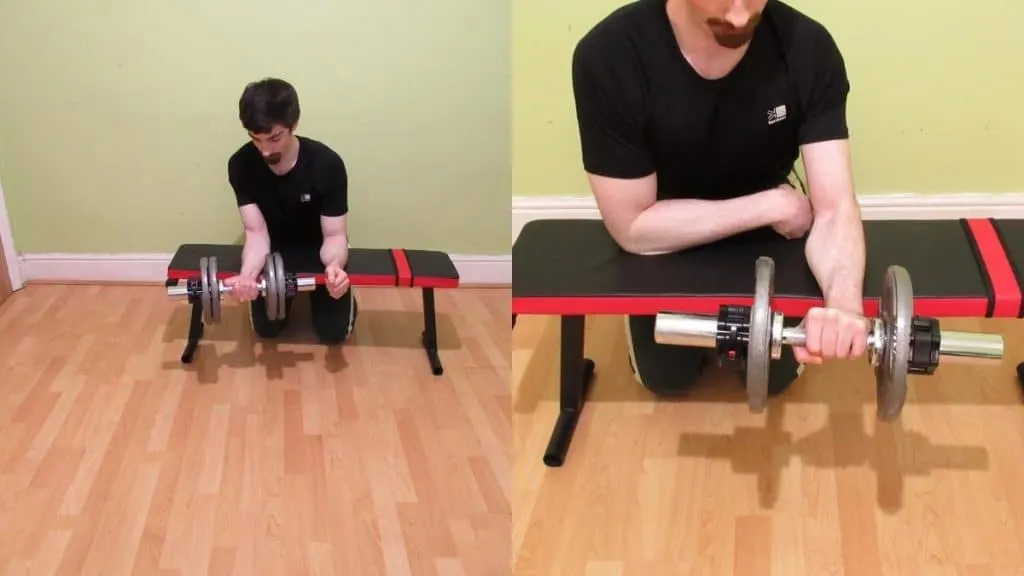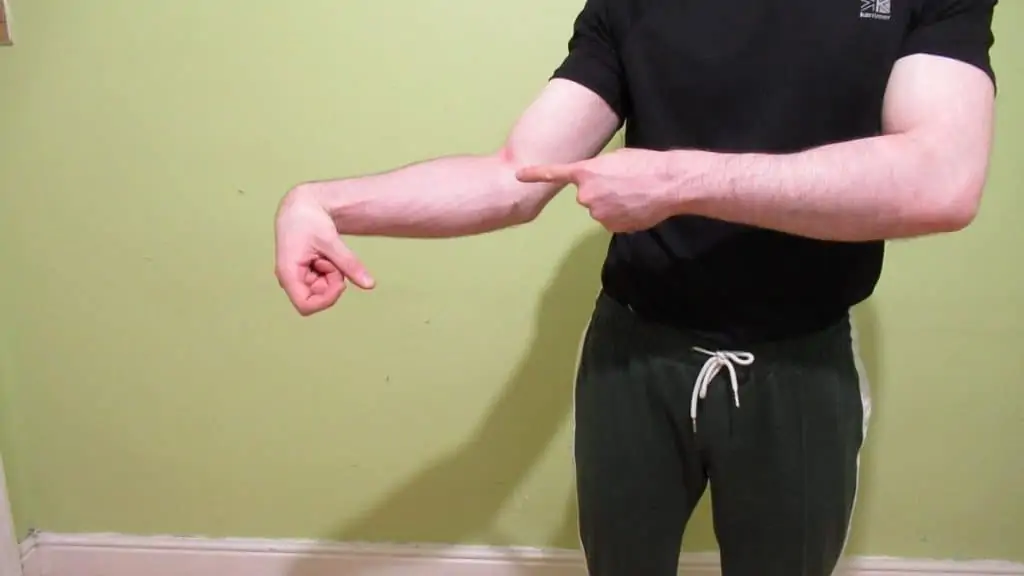Achieving the forearm transformation of your dreams takes grit, dedication, and above all, consistency in the gym. But just how fast can you get results?
And what kind of before and after progress can you see for your forearms?
I’ll answer both these questions and more in this case study inspired transformation guide.
Related posts: big biceps small forearms │how to build forearms
Is it possible to achieve a true forearm transformation?

Before I analyze some real–world forearm transformations, let’s cut to the case; is it actually possible to transform your small forearms into huge slabs of meat?
If you’re a novice trainee, or if you haven’t done direct forearm training before, then yes, it’s absolutely possible to achieve some incredible before and after results.
However, if you’ve already been performing forearm hypertrophy training for a while, then you might find it challenging to add serious size. This is because the forearms are a relatively small muscle group by default.
The good news, however, is that due to their relatively small circumference (compared to other body parts), adding even half an inch or one inch in girth can significantly improve your size if you currently have weak forearm development.
Real forearms before and after results
Using case studies provided by YouTube, I’ve analyzed some forearm transformations so that you can know what to expect based on your genetics, level of dedication, and available equipment.
To see similar videos, check out our triceps transformation article.
Case study one: Better in a month
RJ Salamanca from the Better in a Month YouTube channel trained his forearms daily for 30 days straight. He purchased a simple forearm trainer kit and performed the same workout every day:
- Forearm Wrist Rolls — 3 x 5lbs
- Hand Gripper — 4 x 25 reps
- Forearm Band Strengthener — 4 x 25 reps
- Finger Gripper — 4 x 25 reps
- Donut Gripper — 2 x 50 reps
Before the challenge, his left forearm measured 10.75”. After the challenge, it measured 11.25”. That’s a grand total of 0.5” inches of improvement in circumference.
His right forearm also measured 10.75” before the challenge and grew to 11.125” after 30 days. That’s a total gain of 0.375 inches.
This transformation is impressive because it took only 30 days. If you watch the video, though, you’ll notice that he only improved his dead hang time by 3 seconds, which could easily have been by chance. But perhaps also because he trained his grip directly. [1]
However, the tape doesn’t lie. Or does it?
Based on the video it looks like he measured his forearms (post-challenge) with a pump, which is virtually guaranteed to inflate the measurement.
However, maybe he also measured them pumped before the challenge? It doesn’t look like it from the video but there’s no way to be sure.
Either way, the gentleman’s forearms and his grip strength were very impressive to begin with, in my opinion, so to gain roughly half an inch on either arm is very impressive indeed.
That said, the fact that he trained exclusively with high reps and measured his forearms pumped leads me to believe that the extra size could well be down to some kind of cell swelling rather than new muscle tissue.
Read more: forearms larger than your biceps
Case study 2: Nang
This next forearm transformation comes from the man behind the “nang” YouTube channel. While he didn’t take a before and after measurement, he did see significant improvement in forearm strength and work capacity, which is to say, the total amount of sets and reps that he was able to perform.
I believe that he did this challenge primarily to improve his forearm strength for tennis and wrestling, which is well worth doing. [2] But looking at his before and after photo at the end of the video (and indeed on his Instagram), it’s clear that at the very least, he noticeably improved his lower arm definition.
From what I can see, it also looks like he gained noticeable size.
The cool thing is that this fella only used a basic hand gripper. Also, this was all done during lockdown. So to the best of my knowledge, the gripper was his only source of forearm stimulation.
He went from doing 50 reps with 110lbs to doing 300 reps with 145lbs. Again, this is very impressive in such a short space of time. And if you ask me, using a gripper is a much better transformation method than doing wrist curls because you’re building real grip strength as well as forearm size.
Case study 3: Jeff Seid
While he doesn’t show before and after photos, Jeff Seid credits his forearm routine (which he’s been doing for over 10 years) to his fantastic forearm development.
You’ll notice that unlike the other 2 transformations, he focuses on more volume per session rather than training his lower arms every day. He also lifts much heavier and uses exercises that work his lower arms from different angles.
He starts with behind the back wrist curls and works his way up to 135lbs for 8 reps—all while using strict form. This is also one of my favorite exercises because when you can’t see the weight moving, it forces you to improve your mind muscle connection in order to actually feel the movement in the target muscle.
Jeff then departs to dumbbells to train his extensors. But this time, he trains each arm independently and really goes for the burn. This ensures that he doesn’t have overpowering flexors, which can make the forearms look disproportionate.
How to improve your forearm transformation success

If you want that Popeye forearm development, then you need to consume the calories to support new growth. In practice, this means consuming plenty of quality protein, preferably timed around your workout. Of course, getting in enough fat to support your hormones and then eating enough carbs to get you into a calorie surplus is also important.
Furthermore, I recommend training your forearms 1-2 times per week rather than everyday. This is because your gains are more likely to become permanent (not just a temporary pump) when you lift heavy and then take plenty of time to recover.
As smart lifters often say, muscles don’t grow in the gym. They grow out of the gym when you’re recovering.
Read more: biggest forearms in the world │BFR training for forearms
Conclusion

Overall, it’s very possible to see great before and after progress for your forearms. While much of the initial results from daily training will most likely be due to cell swelling, these results can become permanent if you work your forearms consistently.
After all, many manual laborers retain their impressive forearms years after they finish working with their hands.
For the best forearm transformation possible, however, I recommend dialing back the training frequency and increasing the per session training volume. This way, you get a huge growth stimulus and plenty of time to recover.
References
- Kong, S., Lee, K. S., Kim, J., & Jang, S. H. (2014). The Effect of Two Different Hand Exercises on Grip Strength, Forearm Circumference, and Vascular Maturation in Patients Who Underwent Arteriovenous Fistula Surgery. Annals of Rehabilitation Medicine, 38(5), 648. https://doi.org/10.5535/arm.2014.38.5.648
- Hughes, S. S., Lyons, B. C., & Mayo, J. J. (2004). Effect of Grip Strength and Grip Strengthening Exercises on Instantaneous Bat Velocity of Collegiate Baseball Players. The Journal of Strength and Conditioning Research, 18(2), 298. https://doi.org/10.1519/r-12712.1

